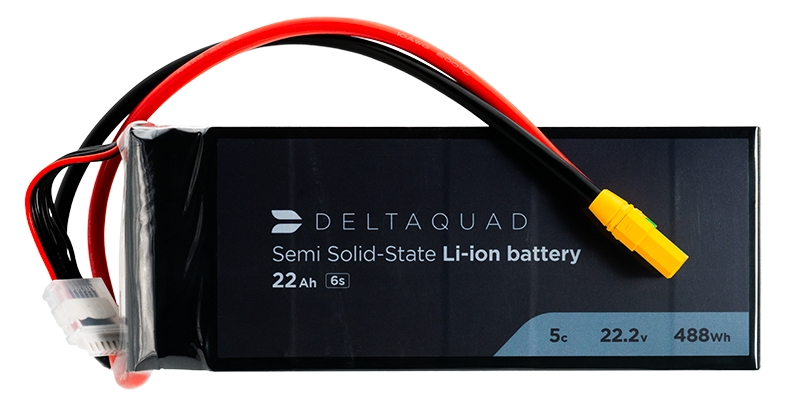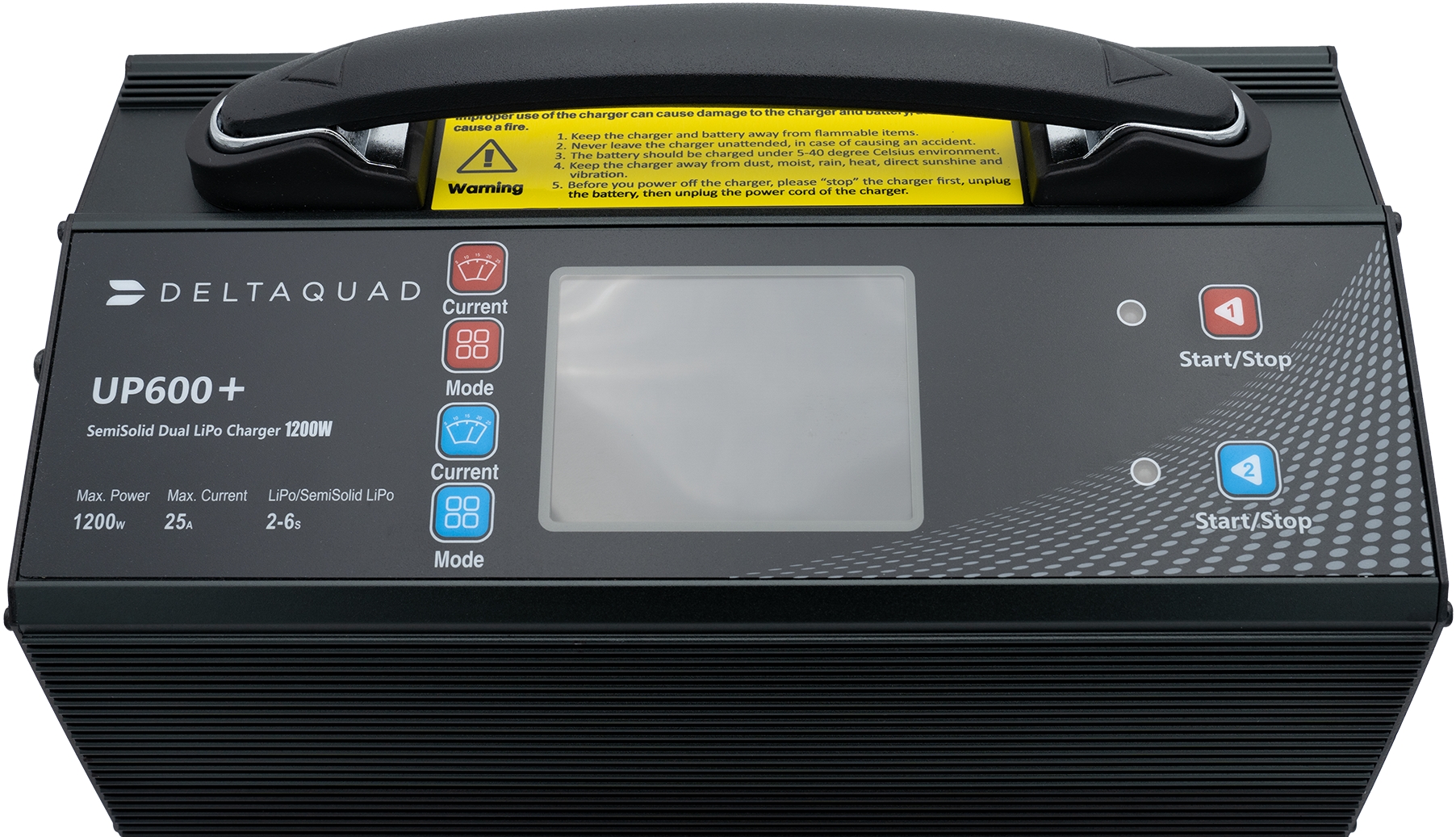Battery Handling
This chapter will cover how to properly handle the DeltaQuad Evo Li-ion battery.

Safety Notice
Use only the DeltaQuad Dual Battery Charger to charge the DeltaQuad Evo Li-ion battery. Do not use a NiCd or NiMH charger. Failure to follow this guidance may result in a fire, which could cause personal injury or property damage. DeltaQuad assumes no responsibility or liability for damages resulting from the use of third-party chargers.

Charge the batteries only at ambient temperatures between 5°C and 30°C (41°F and 86°F).
Never charge batteries unattended unless you are using a Battery Safe. When charging Li-ion batteries, always remain in constant observation to monitor the process and respond to any potential issues.
Ensure the battery is charged under supervision and away from flammable materials or surfaces.
Disconnect the battery from the charger once it is fully charged.
Do not use a damaged charger.
If you notice a battery starting to balloon or swell, discontinue the charging process immediately. Disconnect the battery and dispose of it safely. Continuing to charge a swollen battery can result in a fire. Similarly, never use a battery that is swollen or ballooned.
Since delayed chemical reactions can occur, it is best to observe the battery as a safety precaution. Battery observation should take place in a safe area outside of any building or vehicle and away from combustible materials.
Wire lead shorts can cause a fire! If you accidentally short the wires, place the battery in a safe area for observation for approximately 1 hour. Additionally, if a short occurs and makes contact with metal (such as rings on your hand), severe injuries may result due to electrical conductivity.
A battery can still ignite even after 1 hour. A battery that emits a hissing sound is almost certain to ignite. Prioritize your safety and that of your surroundings before taking any action.
In the event of a crash, wait 10 minutes to ensure the battery was not compromised before removing and safely disposing of it.
Do not use a battery that has been involved in a crash or sustained any significant impact.
Do not expose the batteries to water. If a battery pack is exposed to water, replace it immediately.